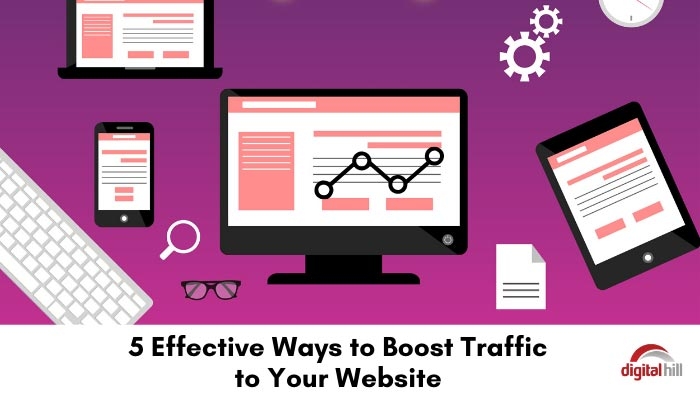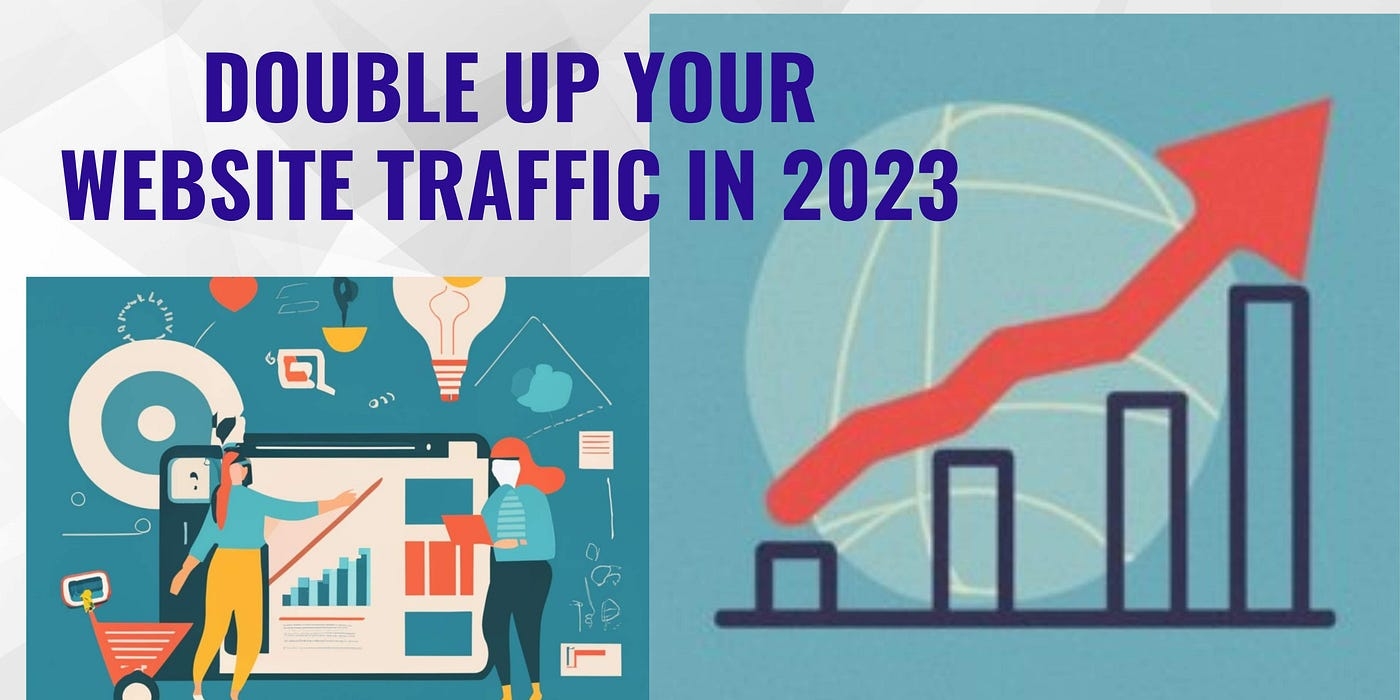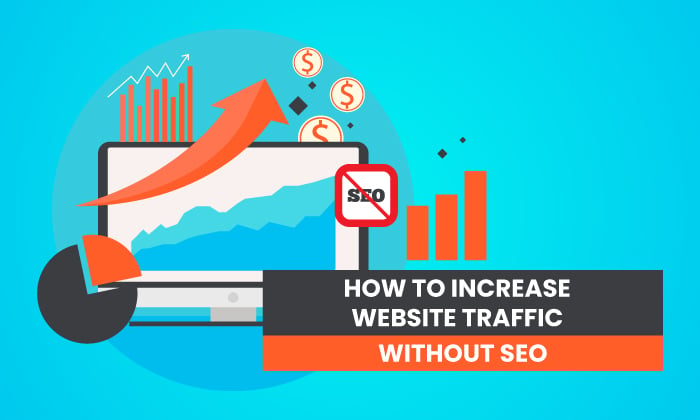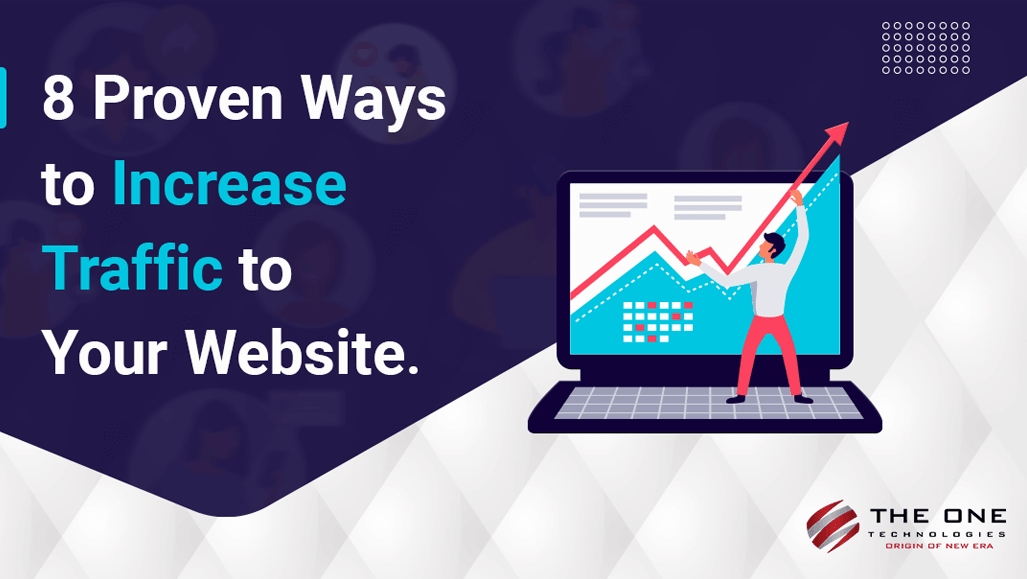Strategies for Enhancing Your Website's Performance by Boosting Native Traffic Acquisition
Buy CPC Traffic | Buy Display Ads | Exclusive traffic sources | Buy Push Ads | Popunder ADS | Buy Native Ads | Buy Preroll Ads

Buy CPC Traffic | Buy Display Ads | Exclusive traffic sources | Buy Push Ads | Popunder ADS | Buy Native Ads | Buy Preroll Ads
In today's digital landscape, where competition is fierce and attention spans are short, driving targeted traffic to your website is crucial for success. Native advertising has emerged as a powerful tool for reaching your desired audience and boosting your website's performance. With its seamless integration into the user experience, native advertising has the potential to drive higher engagement and conversions.
To increase native buy traffic, you need to implement a strategic approach that combines compelling content, effective targeting, and precise measurement. First and foremost, you must create high-quality content that not only grabs the attention of your target audience but also aligns with the native ad format. Whether it's a sponsored article, a video, or an infographic, your content should be informative, engaging, and relevant to your audience's interests.
Next, you need to identify your target audience and tailor your native ads accordingly. Use demographic, behavioral, and contextual targeting to ensure that your ads reach the right people at the right time. By delivering personalized messaging to your audience, you can significantly increase engagement and conversions.
Finally, measurement is crucial for optimizing your native buy traffic strategy. Use analytics tools to track the performance of your native ads, including click-through rates, conversion rates, and engagement metrics. By analyzing this data, you can identify what works and what doesn't, allowing you to refine your approach and maximize your website's performance.
In conclusion, increasing native buy traffic requires a combination of compelling content, effective targeting, and precise measurement. By implementing these strategies, you can drive higher engagement, boost conversions, and ultimately achieve success in the digital landscape.
Understanding Native Buy Traffic
Native buy traffic refers to the practice of purchasing traffic from native advertising platforms. Native advertising is a type of advertising that matches the form and function of the platform it appears on. It is designed to blend in with the surrounding content, making it appear more natural and less intrusive.
Native buy traffic can be a highly effective strategy for boosting a website's performance. It allows website owners to target specific audiences and reach them in a way that feels organic and non-disruptive. By purchasing native buy traffic, website owners can drive more visitors to their site, increase engagement, and potentially convert more leads into customers.
Benefits of Native Buy Traffic

There are several benefits to using native buy traffic as part of your website's performance strategy:
Increased visibility: Native ads are designed to blend seamlessly with the content on the platform, making them more likely to be seen and clicked on by users.
Targeted audience: Native advertising platforms allow you to target specific demographics, interests, and behaviors, ensuring that your ads are seen by the right people.
Better user experience: Native ads are less intrusive than traditional forms of advertising, providing a better user experience and reducing the likelihood of ad-blocking.
Higher engagement: Native ads are more likely to be engaging and relevant to users, resulting in higher click-through rates and longer time spent on your website.
Improved conversion rates: By targeting specific audiences with native ads, you can increase the likelihood of converting leads into customers.
Best Practices for Native Buy Traffic

To make the most of your native buy traffic strategy, consider implementing the following best practices:
Identify your target audience: Before purchasing native buy traffic, clearly define your target audience and their characteristics to ensure that your ads are seen by the right people.
Create compelling ad content: Develop engaging and relevant ad content that aligns with your target audience's interests and needs.
Optimize landing pages: Ensure that your landing pages are optimized for conversion, with clear call-to-actions and relevant content.
Track and analyze performance: Monitor the performance of your native ads, track key metrics such as click-through rates and conversion rates, and make adjustments as needed.
Test different ad formats and placements: Experiment with different ad formats and placements to find what works best for your target audience and goals.
By understanding native buy traffic and implementing effective strategies, you can boost your website's performance and drive more qualified traffic to your site.
Importance of Native Advertising
Native advertising has gained significant importance in recent years as a powerful means to boost website performance. It involves creating ads that seamlessly blend in with the natural content and design of a website, providing a non-disruptive and user-friendly advertising experience.
One of the key benefits of native advertising is its ability to improve user engagement. By seamlessly integrating the ad into the website's content, users are more likely to view and interact with the ads. This results in higher click-through rates and increased conversion rates, leading to improved overall website performance.
Another important aspect of native advertising is its ability to enhance user experience. Native ads are designed to match the look and feel of the surrounding content, making them less obtrusive and more relevant to the user. This helps in building trust and credibility with the audience, leading to a more positive brand perception.
In addition, native advertising provides advertisers with an opportunity to reach their target audience in a more precise and effective manner. By aligning the ad content with the interests and preferences of the users, native ads can deliver relevant and personalized messages, increasing the likelihood of user engagement and conversions.
Furthermore, native advertising enables brands to promote their products or services in a more authentic and contextual way. By leveraging the power of storytelling and utilizing the website's natural content format, native ads can deliver a more compelling and persuasive message, resonating with the audience on a deeper level.
Lastly, native advertising can significantly enhance the visibility and reach of a website. As native ads appear as part of the website's content, they are more likely to be shared and distributed by users, increasing the organic reach of the brand. This can lead to improved brand awareness and increased traffic to the website.
In conclusion, native advertising plays a crucial role in boosting website performance. By providing a non-disruptive and user-friendly advertising experience, native ads can improve user engagement, enhance user experience, reach target audiences effectively, deliver authentic messaging, and increase brand visibility and reach. Incorporating native advertising strategies into your website can be a game-changer in driving success and achieving your marketing goals.
Utilizing High-Quality Content
When it comes to increasing native buy traffic, one of the most effective strategies is to focus on creating and utilizing high-quality content. In today's digital age, content is king, and having engaging, informative, and relevant content is key to attracting and retaining visitors to your website.
High-quality content serves a dual purpose. Firstly, it helps to improve your website's visibility in search engine results. Search engines like Google prioritize websites that have valuable and unique content, which in turn leads to higher organic traffic. By optimizing your content with relevant keywords and providing valuable information to your audience, you can enhance your website's SEO and attract more organic traffic.
Secondly, high-quality content is essential for engaging your visitors and converting them into customers. When users visit your website and find informative and well-presented content, they are more likely to stay longer, explore your offerings, and take the desired action, such as making a purchase or signing up for a newsletter. Engaging content builds trust and credibility, encouraging users to return to your website in the future.
When creating high-quality content, consider the following tips:
Understand your target audience: Research your audience's demographics, preferences, and pain points to create content that is tailored specifically to their needs.
Provide valuable information: Focus on providing information that is relevant, up-to-date, and adds value to your audience. This can include educational articles, how-to guides, industry insights, and expert opinions.
Use visual elements: Incorporate visually appealing elements such as images, videos, infographics, and charts to enhance the presentation of your content and make it more engaging.
Keep it concise and readable: Break down your content into easily scannable paragraphs, bullet points, and subheadings. Use clear and concise language to convey your message effectively.
Promote your content: Share your content on social media platforms, guest post on relevant blogs, and consider buying traffic through reliable platforms to give your content a broader reach and increase its visibility.
By focusing on creating high-quality content and leveraging its potential, you can significantly boost your website's performance and drive more native buy traffic to your site.
Targeting the Right Audience
When it comes to increasing native buy traffic and boosting your website's performance, one of the key factors to consider is targeting the right audience. By understanding your target audience and tailoring your content and advertising efforts to reach them, you can significantly improve your website's performance and increase conversions.
Identify Your Target Audience

The first step in targeting the right audience is identifying who your ideal customers are. Take the time to analyze your current customer base and gather data on their demographics, interests, and behaviors. This will help you create buyer personas that represent your target audience and guide your marketing strategy.
Additionally, conducting market research and competitor analysis can provide valuable insights into the preferences and needs of your target audience. By understanding what your audience is looking for and how your competitors are reaching them, you can better position your website and offerings to attract their attention.
Create Relevant and Engaging Content
Once you have a clear understanding of your target audience, it is essential to create relevant and engaging content that resonates with them. Your website's content should address their pain points, provide helpful information, and offer solutions to their problems.
Use the language and tone that will appeal to your target audience and align with their values and interests. Utilize keywords and phrases that they are likely to search for, which will help improve your website's visibility and organic search rankings.
Consider incorporating different types of content, such as blog articles, videos, infographics, and case studies, to cater to different preferences and learning styles. By diversifying your content, you can attract a wider audience and keep them engaged on your website.
Utilize Targeted Advertising
In addition to creating relevant content, targeted advertising is another effective strategy for reaching the right audience. Native advertising, in particular, allows you to seamlessly integrate your ads into the user's experience, increasing the chances of capturing their attention.
Utilize the data you have gathered about your target audience to create highly targeted ads that appear on platforms and websites that they frequent. This could include social media platforms, industry-specific websites, or popular blogs that cater to your target audience.
Furthermore, consider using retargeting techniques to reach potential customers who have previously visited your website but did not convert. By displaying personalized ads to these individuals as they browse other websites, you can increase the likelihood of them returning to your site and making a purchase.
In conclusion, effectively targeting the right audience is crucial for increasing native buy traffic and improving your website's performance. By understanding your target audience, creating relevant content, and utilizing targeted advertising, you can attract the right visitors to your website and increase conversions.
Optimizing Landing Pages
The success of your native buy traffic campaign heavily relies on the effectiveness of your landing pages. A carefully optimized landing page can greatly enhance the conversion rate of visitors into customers. Here are some strategies to optimize your landing pages:
1. Clear and Compelling Headline
A strong headline is essential to grab the attention of visitors and communicate the value proposition of your product or service. Make sure your headline is clear, concise, and highlights the key benefits of what you are offering. Use persuasive language to create a sense of urgency or exclusivity, encouraging visitors to take action.
2. Engaging and Relevant Content

The content on your landing page should be concise, compelling, and focused on the needs and wants of your target audience. Clearly communicate the unique selling points and benefits of your product or service, using persuasive language and captivating visuals. Use bullet points or short paragraphs to make the content easy to skim and digest.
It is important to align the content on your landing page with the messaging used in your native buy traffic campaign. Consistency in messaging and visuals will help reinforce the message and build trust with visitors.
3. Well-designed Call-to-Action (CTA)

Your landing page should have a clear and prominent call-to-action (CTA) that entices visitors to take the desired action, such as making a purchase or filling out a form. The CTA button should be visually distinct and use action-oriented language. Consider using contrasting colors to make the button stand out and draw attention.
Make sure the CTA button is placed in a prominent position on the page and is easily accessible. Avoid cluttering the page with too many distractions that may divert visitors' attention from the CTA.
4. Mobile-Friendly Design

With the increasing use of mobile devices, it is crucial to ensure that your landing page is optimized for mobile users. Make sure your landing page is responsive and adapts well to different screen sizes. Use larger fonts, clear buttons, and easy-to-navigate menus to provide a seamless mobile experience.
Test your landing page on different devices and screen sizes to ensure it is user-friendly and visually appealing across all platforms.
By implementing these optimization strategies, you can maximize the conversion rate of your landing pages and make the most out of your native buy traffic campaign.
Monitoring and Analyzing Performance

Monitoring and analyzing the performance of your website is crucial for optimizing its native buy traffic. By keeping track of key metrics, you can identify areas for improvement and make data-driven decisions to enhance your website's performance. Here are some strategies to help you effectively monitor and analyze performance:
Use analytics tools: Utilize platforms like Google Analytics or Adobe Analytics to track important metrics such as bounce rate, page load time, and conversion rates. These tools provide detailed insights into user behavior and engagement on your website.
Set up goals: Define specific goals for your website, such as increasing conversions or reducing bounce rates. Regularly monitor and evaluate your progress toward these goals to ensure your efforts are aligned with your objectives.
Monitor website speed: A slow-loading website can significantly impact user experience and lead to higher bounce rates. Regularly test your website's speed using tools like PageSpeed Insights and take necessary measures to optimize load times.
Track referral sources: Understand where your website traffic is coming from by tracking referral sources. This information can help you identify the most valuable sources and allocate your resources accordingly.
Analyze user behavior: Take advantage of heatmaps, click tracking, and user session recordings to analyze how users interact with your website. This data can uncover insights about design issues, user preferences, and potential areas for improvement.
A/B testing: Conduct A/B tests by creating different versions of your website and comparing their performance. This allows you to optimize elements like landing pages, call-to-action buttons, and website copy to improve conversion rates.
Stay up-to-date: Keep an eye on industry trends and updates to ensure your website remains in line with best practices. Regularly audit your website to identify any technical issues or outdated content that may hinder its performance.
By consistently monitoring and analyzing your website's performance, you can identify areas of improvement, optimize user experience, and drive more native buy traffic to your website. Remember to regularly review your analytics data and make data-driven decisions to continuously enhance your website's performance.
Testing and Experimenting with Ads
When it comes to increasing your website's performance and boosting native buy traffic, testing and experimenting with ads is a crucial strategy. By continuously testing different ad formats and placements, you can gather valuable data and insights to optimize your advertising efforts.
1. Start with A/B Testing
A/B testing involves comparing two versions of an ad to see which one performs better. This can help you identify the most effective design, copy, and call-to-action (CTA) for your target audience. By testing various elements, such as headline, image, and CTA button color, you can determine what resonates best with your users.
2. Test Multiple Ad Formats
Native advertising offers a variety of ad formats, including in-feed ads, recommendation widgets, and content suggestion ads. Testing different ad formats will allow you to understand which type works best for your website and audience. For example, you can experiment with in-feed ads to seamlessly integrate ads within your website's content or try recommendation widgets to provide personalized suggestions to users.
3. Experiment with Ad Placements
The placement of your ads can significantly impact their performance. Testing different ad placements can help you determine the optimal position for driving engagement and conversions. Consider testing ads placed above the fold, within the main content, or at the end of an article. Additionally, experimenting with ad placements on different devices, such as desktop and mobile, can help you optimize for different screen sizes and user behaviors.
4. Monitor and Analyze Performance Metrics
During your testing and experimentation phase, it is essential to monitor and analyze performance metrics such as click-through rates (CTR), conversion rates, and engagement metrics. By tracking these metrics, you can identify trends and patterns, allowing you to make data-driven decisions and refine your ad strategy accordingly.
5. Continuously Refine and Optimize
Testing and experimenting with ads is an ongoing process. As you gather insights and data, it's crucial to refine and optimize your ad strategy continuously. Consider implementing changes based on your testing results and monitoring their impact on performance. By staying proactive and adaptable, you can ensure that your ads are consistently improving and driving more native buy traffic to your website.
What are some effective strategies to increase native buy traffic?
There are several strategies that can effectively increase native buy traffic to your website. One strategy is to create high-quality, engaging content that is relevant to your target audience. This can help attract more visitors to your site and keep them coming back for more. Another strategy is to optimize your website for search engines, using keywords and meta tags to improve your site's visibility in search results. Additionally, partnering with influencers or other websites in your niche can help drive traffic to your site.
Why is it important to increase native buy traffic?
Increasing native buy traffic is important because it can result in a number of benefits for your website. Firstly, more traffic means more potential customers or clients, which can increase your sales or conversions. It can also help improve your website's visibility and credibility, as more people visiting your site indicates that your content or products are of interest. Additionally, increasing traffic can lead to higher search engine rankings, as search engines often consider the number of visitors to a site when determining its relevance and authority.
How can I attract more visitors to my website?
There are several strategies you can use to attract more visitors to your website. Firstly, creating high-quality, engaging content that caters to your target audience is essential. This can help attract visitors who are interested in your content or products. Secondly, optimizing your website for search engines can improve your site's visibility in search results, making it easier for people to find. Utilizing social media platforms to promote your website and content can also help attract more visitors. You can also consider partnering with influencers or other websites in your niche to drive traffic to your site.
What role does content play in increasing native buy traffic?
Content plays a crucial role in increasing native buy traffic. Creating high-quality, engaging content that is relevant to your target audience can attract more visitors to your website and keep them coming back for more. When people find your content valuable and informative, they are more likely to share it with others, which can further increase your site's visibility and traffic. Additionally, well-written content that incorporates relevant keywords can help improve your website's search engine rankings, making it easier for people to find your site through organic search results.
How can partnerships with influencers or other websites help boost website performance?
Partnerships with influencers or other websites in your niche can help boost your website's performance in several ways. Firstly, collaborating with influencers who have a large, engaged following can help expose your website to a new audience, potentially driving more traffic to your site. Secondly, backlinks from reputable websites in your industry can not only bring more visitors directly but also improve your site's search engine rankings, as search engines consider backlinks as a sign of website authority. These partnerships can also help enhance your website's credibility and reputation, as being associated with industry influencers or well-established websites can build trust with your target audience.
Buy CPC Traffic | Buy Display Ads | Exclusive traffic sources | Buy Push Ads | Popunder ADS | Buy Native Ads | Buy Preroll Ads
2022-2024 @ Increasing Native Buy Traffic: Strategies to Boost Your Website's Performance